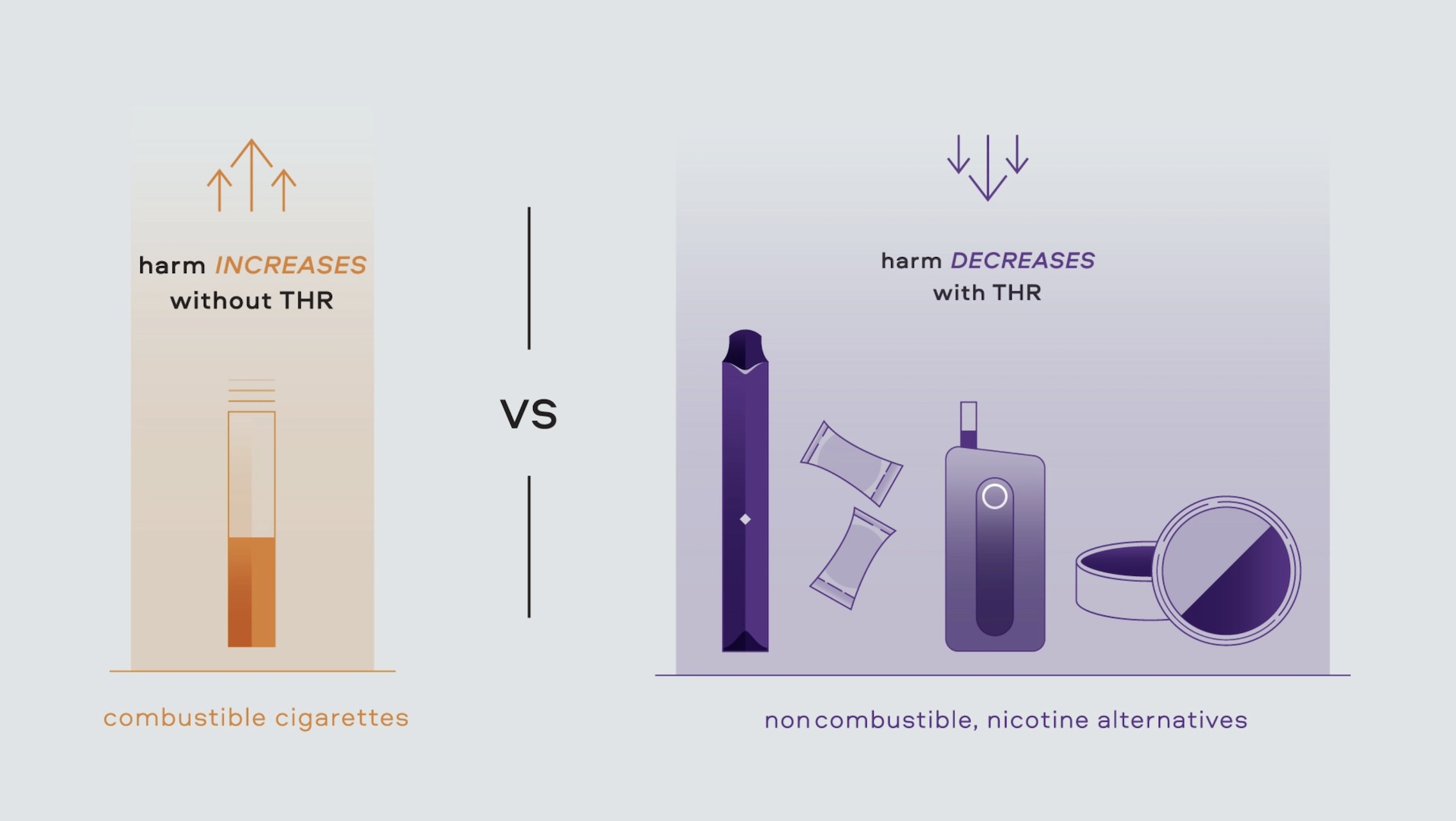Creating a Better TomorrowTM for public health in America

Since 1970, the rate of adult smoking has fallen more than 70 percent in the U.S.1 However, of those adults that still use tobacco products, including noncombustible products, more than 79% use combustible cigarettes.2 That number will likely remain higher than it could be if there is a lack of access to potentially less risky product alternatives for those adult smokers who are uninterested in quitting tobacco altogether.
Harm Reduction is a Proven Effective Strategy
Harm reduction is the strategy of reducing negative consequences of inherently risky behavior. Seat belts, for example, are a harm reduction strategy implemented to reduce the likelihood of death from car accidents. Safety goggles in the laboratory, personal protective equipment in healthcare settings, and hard hats on construction sites are just a few examples of harm reduction in our everyday lives.
Over the years, harm reduction has served as an important counter in recurrent policy discussions regarding regulation governing potentially harmful behavior. Harm reduction is a better alternative to another prevailing yet ineffective public health philosophy regarding risky behavior — prohibition and government bans.

Effective THR policies have the possibility to make strides in public health and reduce the burden of combustible tobacco use.3 With real world examples of the successes of acceptable and accessible noncombustible alternative products in Japan, the UK and Sweden, there is a reason for optimism and urgency. Advances in science call us to reexamine many of the tobacco control policies and approaches that are over two decades old.4
We hope to encourage renewed conversation on THR among all stakeholders. It is time to study the facts and pursue unified, science-based policies that best serve public health. From providing accurate information about nicotine’s health effects and alternatives available to adult cigarette smokers, to replacing ideologies with pragmatic, real world solutions, the time is now to advance one of the most consequential movements in public health. Succeeding in reducing the health-related illnesses due to combustible cigarette smoking is a challenge that is larger than any single organization.
The public health community, regulators, legislators, consumers, scientists, healthcare professionals and industry all have a voice and role to play in developing a more informed THR strategy that will result in a brighter future for millions of adult smokers in America and society at large.
Also available on:
- “Current Cigarette Smoking among Adults in the United States.” Centers for Disease Control and Prevention.
https://www.cdc.gov/tobacco/data_statistics/fact_sheets/adult_data/cig_smoking/index.htm. - “Current Cigarette Smoking among Adults in the United States.” Centers for Disease Control and Prevention.
https://www.cdc.gov/tobacco/data_statistics/fact_sheets/adult_data/cig_smoking/index.htm. - “FDA’s Comprehensive Plan for Tobacco and Nicotine Regulation.” U.S. Food and Drug Administration.
https://www.fda.gov/tobacco-products/ctp-newsroom/fdas-comprehensive-plan-tobacco-and-nicotine-regulation. - Levy, D. T. et al. “Public Health Implications of Vaping in the USA: The Smoking and Vaping Simulation Model.”
Popul Health Metr, vol. 19, no. 1, 2021, p. 19, doi:10.1186/s12963-021-00250-7.


